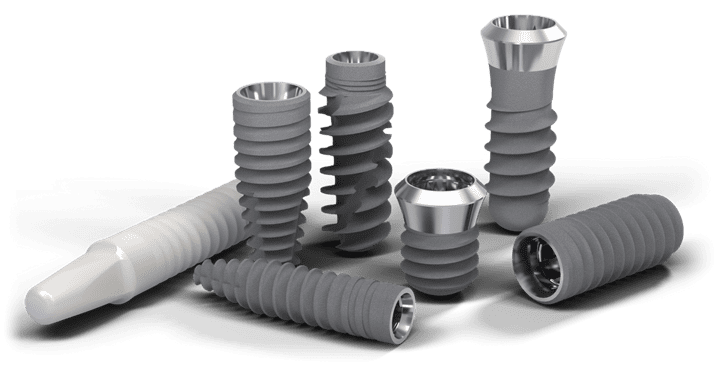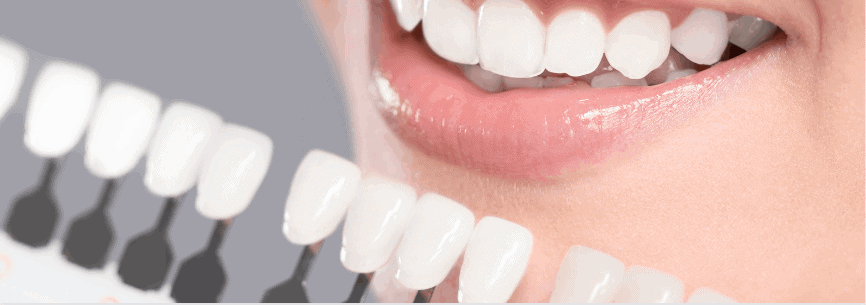Types of dental bridges: their benefits, differences and cost.
If you have one or multiple missing teeth, your dentist can recommend replacing them and filling their gap with a dental bridge. But what is a dental bridge? What are the four different types of dental bridges, and how do they differ?
What is a dental bridge?
A dental bridge is a set of interconnected crowns commonly advised for anyone who lost one or multiple teeth and wants to regain a chewing comfort as well as their ability to smile!
In most cases, patients decide to go for a permanent solution, however, you can still get a removable denture. Learn more about the differences between fixed and removable dentures and how to choose your solution.
At the EL CEDRO Barcelona clinic, we only do fixed bridges as they are offering the most comfort, best chewing abilities and most aesthetically pleasing smile.
What are the four types of dental bridges?
Traditional Dental Bridge
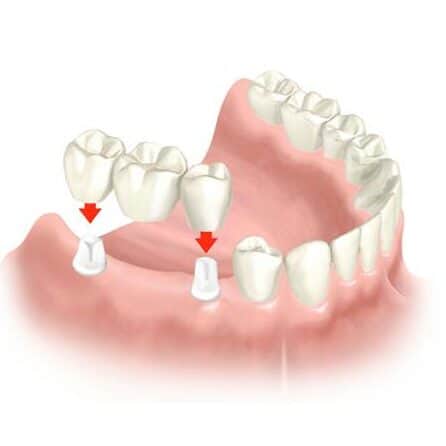
Getting a traditional dental bridge is the most common solution chosen among patients. It is the best solution for people who have healthy natural teeth around the gap caused by the missing tooth. The surrounding teeth will serve as a support for the bridge, also called abutment teeth.
The traditional dental bridge is composed of a large crown glued to the two surrounding teeth with a fake tooth in between.
Traditional dental bridge is a fixed and durable solution that offers a particularly natural result, at the same time aesthetic and functional. It helps regain a smile and a mastication comfort without having to undergo surgery and can be done in just 3 days.
At the EL CEDRO clinic, a traditional bridge cost starts at 1 110 € (£993) against 2 796 € (£2,400) in the UK and 1 950 € (£1,680) in France. Find out more about traditional dental bridge cost.
Cantilever Bridge
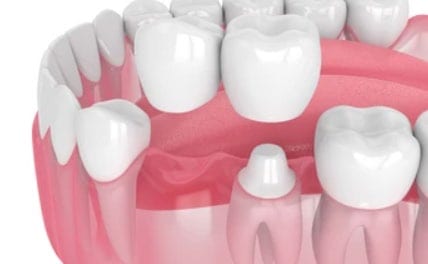
A cantilever dental bridge is used by patients missing only one tooth as it uses a single anchor tooth. That’s why it is cheaper than other bridges but it’s also a fastest solution. It’s recommended to use this type of bridge over the tooth toward the front of the mouth. Dentists often don’t use this type of bridge because of the risks involved.
As it relies on one tooth only, it can cause complications such as broken teeth or loose crowns. For patients with a single missing tooth, a dental implant is a safer option. We don’t do Cantilever bridges at the EL CEDRO Barcelona clinic.
Maryland Bridges
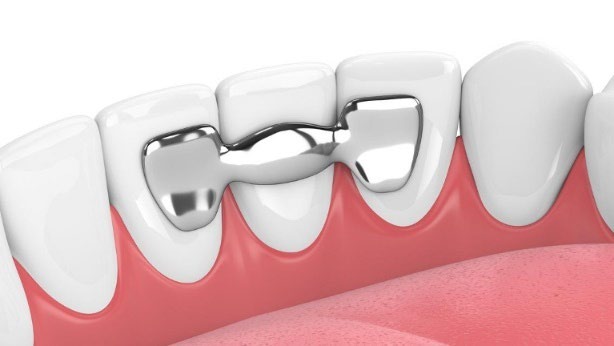
Maryland dental bridge, as traditional dental bridge, are used only when teeth around the gap area are healthy. This type of bridge uses metal or porcelain on the back of the abutment instead of using crowns. The supporting teeth are not reshaped because no crowns are placed on them. While this type of solution may be the quickest and cheapest, it is not the safest. Maryland dental bridges are not the best option because of the lack of strength of these bridges compared to other bridges, they can also cause tooth discoloration.
Implant-Supported Bridges
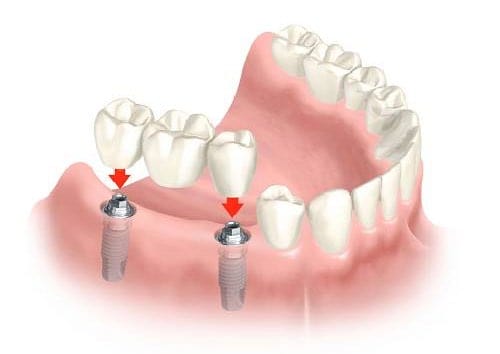
An implant-supported bridge is a combination of dental implant and dental bridge. It is the perfect solution if the teeth surrounding the area of the gap caused by the missing teeth aren’t in good shape anymore and can’t serve as a support for the bridge. An implant-supported bridge can be made of a minimum of 3 crowns on 2 implants to a maximum of 12 crowns on 6 implants.
The dental bridge on implant is a fixed and durable solution that offers a natural aesthetic result. Easy to maintain, it allows to find an excellent comfort in the mouth, both in terms of chewing and speech. With a dental bridge on implant, the patient can indeed return to a varied diet and will no longer be afraid of bitting into an apple!
At the EL CEDRO clinic in Barcelona, a dental bridge on 2 implants costs 2 950 € (£2,640) against 4 078 € (£3,500) in the UK and 4 650 € (£4,004) in France. A dental bridge on 6 implants costs 9 960 € (£8,914) in Spain, against 11 954 € (£10,260) in the UK and 16 000 € (£13,777) in France. Find out more about dental bridge on implants cost.
What materials are used in a dental bridge ?
These 4 types of dental bridges are made of a combinasion of metal and porcelain or ceramic, in some cases dental bridges can also be made completley out of metal. For aesthetics reasons, strength and durability, the EL CEDRO Barcelona dental clinic uses exclusively dental bridges made out of ceramic on a metal base or ceramic on a zirconia base.
Which of the 4 types of dental bridges is the best one for me?
As previously explained, the recommended type of dental bridge depends on:
- The number of teeth missing
- The health of your surrounding teeth
- The desired smile result
- The desired comfort
As every patient is different, it relies on your dentist to decide which is the best solution for you.
However, at the EL CEDRO Barcelona clinic, we only do traditional bridges and implant-based bridges out of the 4 different types of dental bridges as they are the safest options. Indeed, they are more comfortable to eat with, they give you a very good looking smile and they are the most durable ones.
We highly recommend you one of this 2 options if you are missing one or multiple teeth.
Q&A
How long do dental bridges last?
Fixed dental bridges typically last from 10 to 30 years. However, the lifetime of dental bridges depends on the oral health, the quality of the patient hygiene and maintenance. Only if properly taken care of, dental bridges can last up to 30 years. Find out more about the lifetime of a dental bridge.
Is it common for a dental bridge to fall out?
Even if fixed dental bridges are designed to last a lifetime, they can loosen up overtime. It can easily be tightened by your dentist though. In order to protect your dental bridges from loosening, a good oral hygiene should be performed on a daily basis.
How long does it take to get used to a dental bridge?
In most cases, patients adjust and get fully used to their dental bridges in two weeks. The first two weeks following the procedure are very important and patients should follow the dentist’s recommendations.









